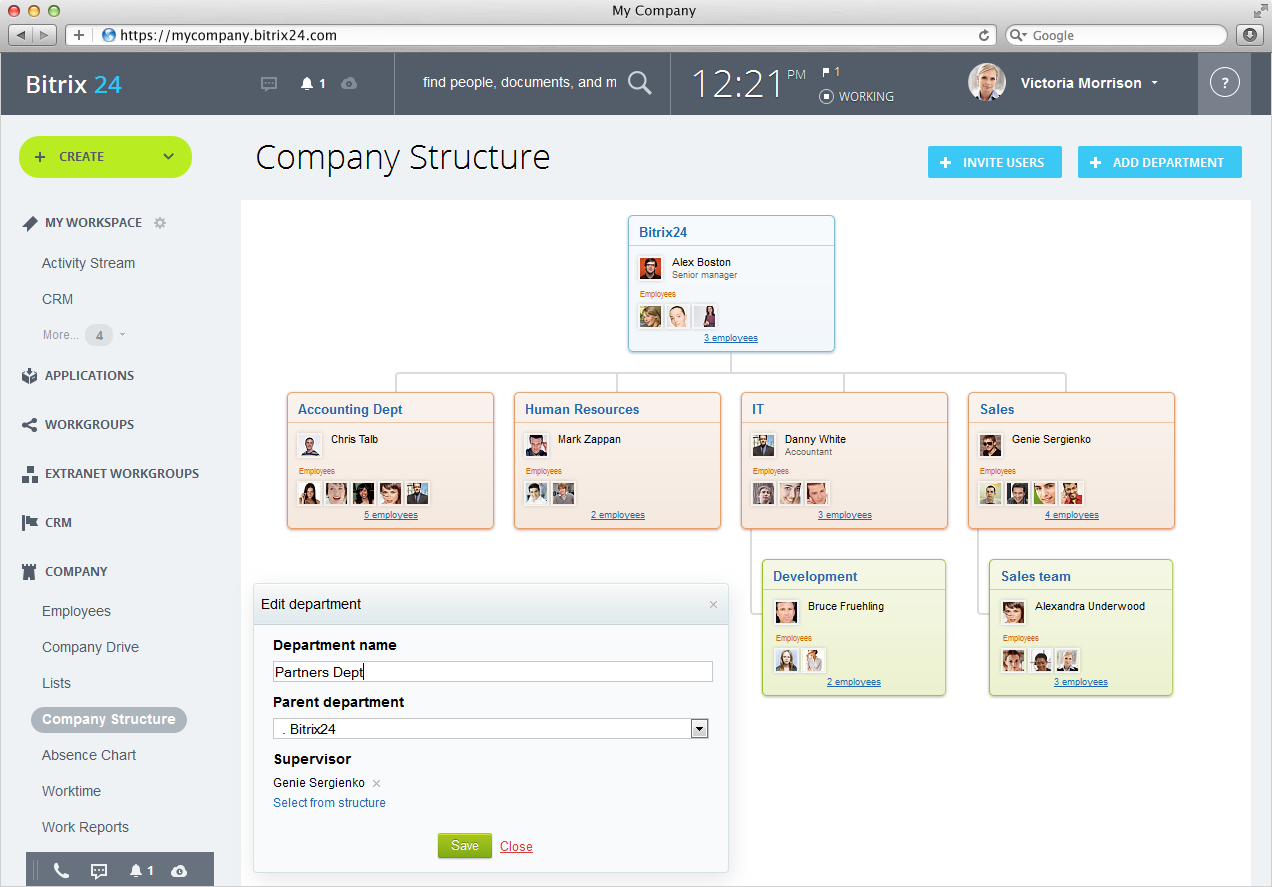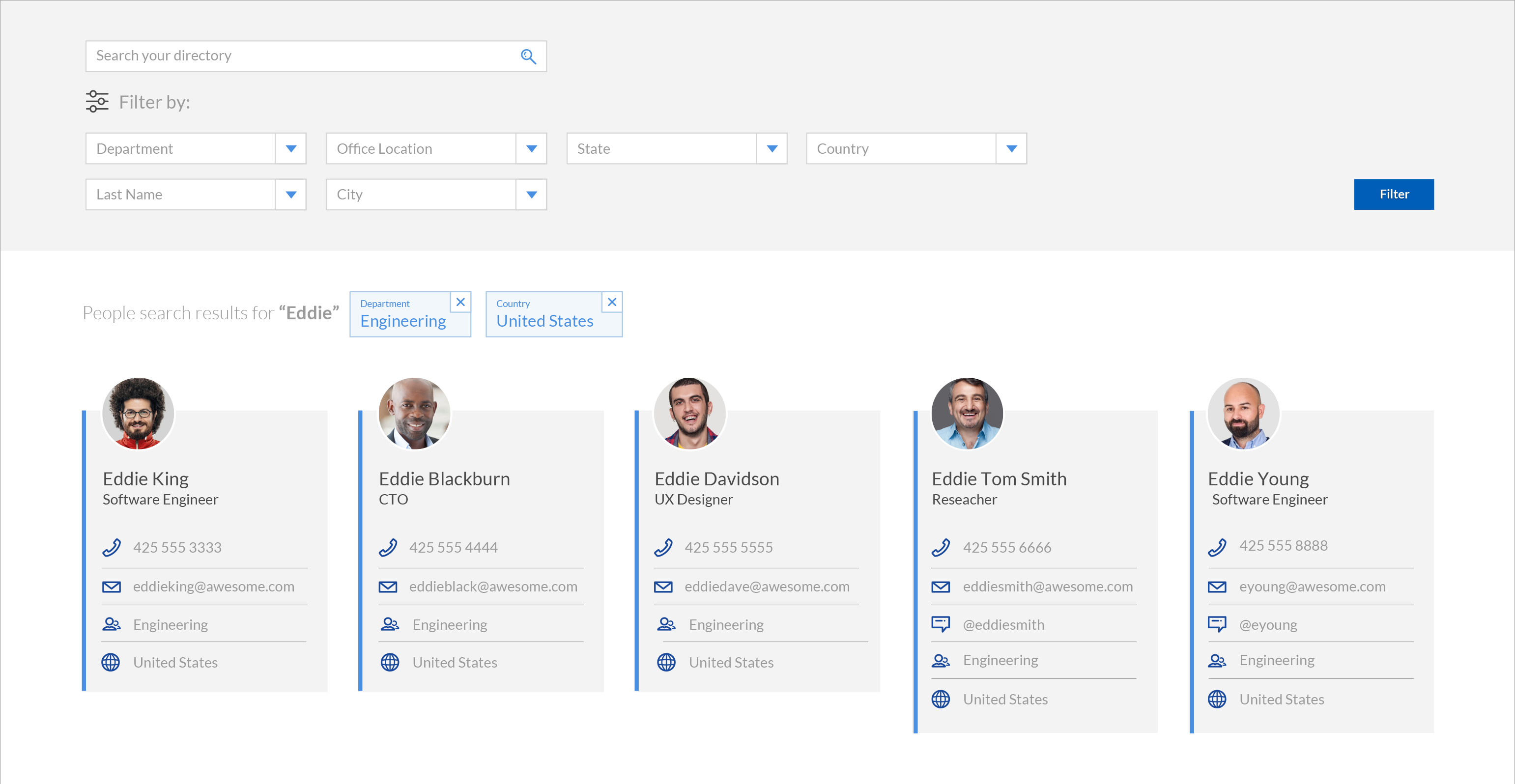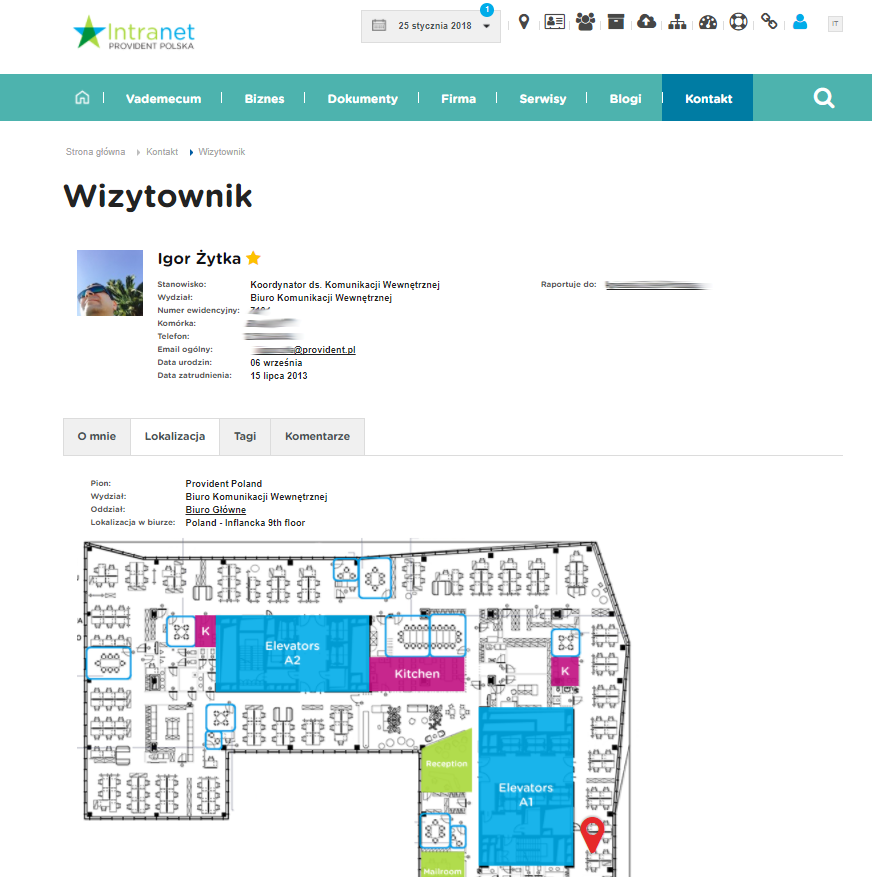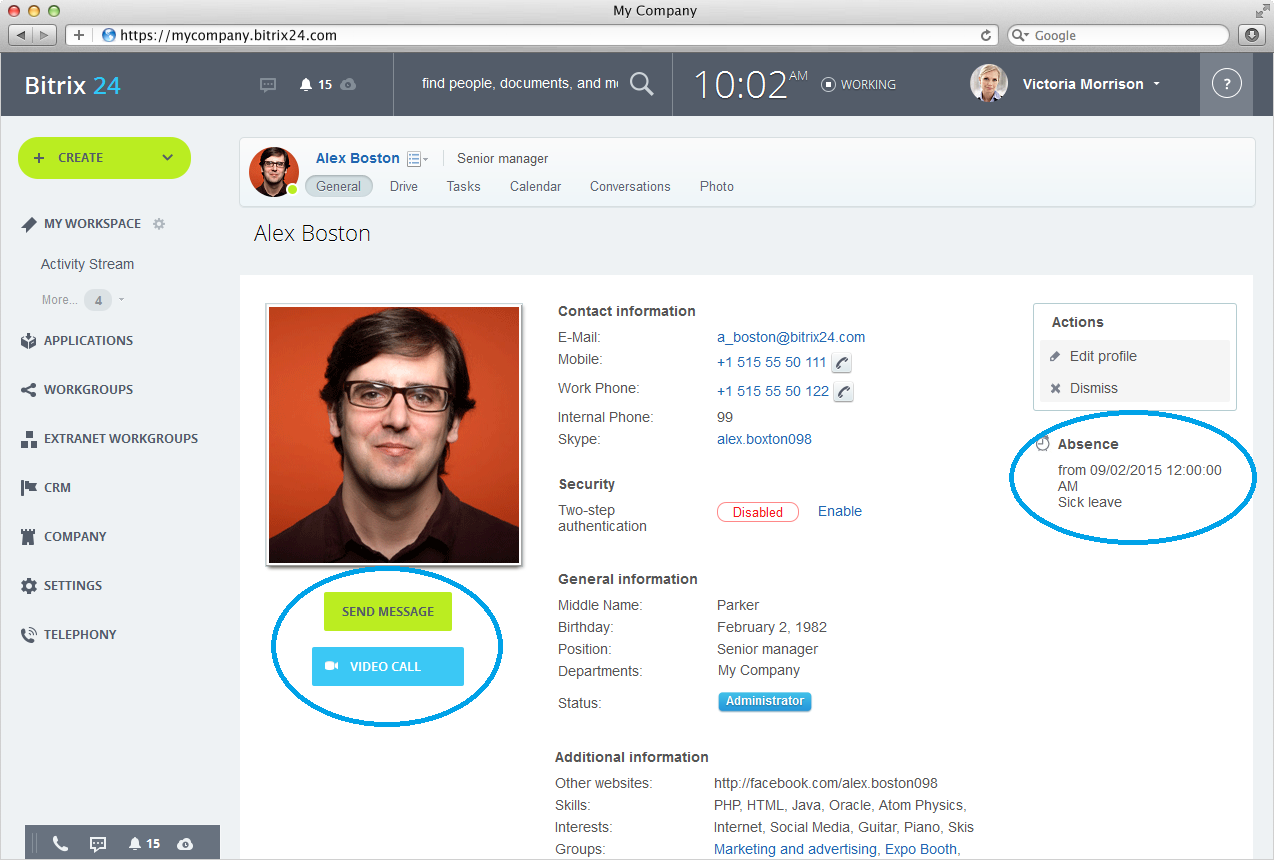

Having an up-to-date organisational chart on the intranet is a must. And I don’t mean here a chart listing all the employees in a structure of the company (e.g. in a PDF document), but the one that is intuitive, interactive, fast to use and with all pieces of information published there easy to find and useful at work. And it’s not a high requirement – it should be obligatory. To make it easier to design a proper online chart for the intranet, I’ve prepared some tips regarding elements to consider while designing this kind of chart at our company.
The organisational chart like a tree
If you face a challenge to implement a new intranet or if you are responsible for updating the existing one, consider implementing the organisational chart that looks like a tree you can walk on. Moreover, it’s advisable to add extended employee profiles to it, a good search engine and a map of office to show who sits where.
(source: teamorgchart.com)

A few examples of the organisational charts on the intranets with the possibility to walk on them (source: blkpros.com)
We talk about ‘a tree organisational chart’ when we can click on a person mentioned in this chart and check the name of the supervisor of this employee and the names of other members of this team as well. After clicking (on the name of the employee), we are transferred to the personal profile of this employee to check the details concerning this person. We can ‘walk’ on this kind of chart in all directions: up to the top of the structure to check who is at the top, on the board (members of the board should have their personal profiles completed as well to set an example to other employees) and walk down to check details about the employees who are at the bottom of the structure in our company.
Employee profiles
If we click on a profile of an employee, we should be transferred to a personal profile of this person. We can check personal data like, e.g. a phone number, an email address or an office address, which are usually downloaded from the HR system automatically. There should also be forms to fill in by the employees to give more information about them.

An example of the employee profile (source: bitrix24.com)
In these forms, our employees can mention their interests, current project, tasks, skills, etc. It’s important to share this kind of information as well because they may be useful to others if they need to find a person with a particular set of skills or performing a particular task. Our employees don’t need to know (and aren’t even able to know) all the details about their co-workers. They can write some key words in the search engine to find the right person. To make it even easier, we may create an extra form and ask our employees to add their tags with the words which describe them best.
There are companies that add space for the employees for such profiles to write a few words about their hobbies and interests. The aim is to help the employees integrate and get to know each other better.
Moreover, it’s useful and helpful to add information about their absences and other data that are visible only by the owner of this profile. It can be, e.g. a number of days off left to use, a working hours schedule, the access to the firm’s platforms and systems or the results of the annual employee assessment.
Search engine of the employees
It’s common to add a search engine alongside with the organisational chart to make it simple to look for the employees. It’s important to design it in a proper way. Our employees may use it in various ways, e.g. they can search by names, job titles or tasks. That’s why, it’s so important to encourage them to fill in their personal profiles and keep them updated. Then it’ll be easier to find the others.

An example of the employee search engine (source: hyperfish.com)
This search engine can work like Google does. We may use filters and see the key words in the search results. It may also be supported by a chatbot helping us find the right person after answering a few questions concerning this employee.
A map with location
Another good and useful solution is to create a map with marked teams, business units and floors to show all the desks of the employees on it. It may also be available within the personal profile of each employee. This solution may be helpful for the newcomers and in companies with numerous staff.

An intranet map showing all floors with the desks of all the employees implemented in Provident Poland (source: my IC blog in Polish: beedifferent.pl/blog)
Send a message or call an employee
Another interesting intranet functionality connected to personal profiles is the possibility to call the employees or send them a message from the level of their online profiles. If it’s too complicated to integrate with other tools we use in our company, we may consider adding a Skype ID (or other instant messenger) or email addresses.

It’s also helpful to add the employee absences to their online profiles on the intranet (source: bitrix24.com)
A calendar and absences
A helpful solution is to implement an online calendar and show the data from the HR system in it, e.g. absences. Colours used in this online calendar may inform if this employee is on holidays, a business trip or sick leave. We can also see business plans of this person for the upcoming months and future holidays or trips.
Updating the data
Updating as much data as possible on these profiles and in the organisational chart should be automatic. If the HR Department makes any changes in their HR system concerning the employees, these changes should be updated on their profiles on the intranet. If an employee changes the place in the company structure, e.g. because of promotion, it should be changed automatically in the chart. We should also encourage our employees to take care and update their profiles to make it easier for others to find them. To encourage them to do that, we may organise a promotional campaign or quizzes.
Your ideas and the implemented solutions
If you implemented an interesting solution concerning organisational charts in your company and would like to share it, let me know. I’ll be happy to add your ideas to this article to promote good solutions on the intranets among other internal communication professionals.
******
Join me on:
• Facebook @behindtheicscenes
• Twitter @maja_biernacka
• LinkedIn






